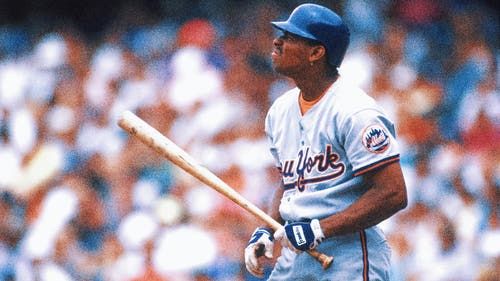
Jason Heyward could turn Braves around
Jason Heyward is more than the top prospect in baseball.
He’s the player who could transform the Braves from a modest threat into a World Series contender.
Yes, that’s a lot to ask — especially when Heyward, 20, has made just 208 plate appearances above Single-A.
But listen to Braves third baseman Chipper Jones:
“I saw Andruw (Jones) play a little bit in the minor leagues when he was a 19-year-old kid. He looked like Devon White playing with a bunch of minor leaguers.
“This Heyward kid looks like Fred McGriff with 20 more pounds on him out in right field. He is built. He is put together. And he means to do some damage when he walks to that plate.”
Heyward is 6-foot-4, one inch taller than McGriff, who also batted left-handed. He has gained 20 pounds this offseason — “all muscle,” Braves general manager Frank Wren says — and now weighs 245. McGriff’s playing weight, according to baseball-reference.com, was 215.
Chipper Jones is not trying to add to Heyward’s hype; he says he barely has seen the kid play, even in spring training. Jones also notes that the Braves always are “really careful” about bringing young players to the majors, noting that the team did not promote right-hander Tommy Hanson from Triple-A until June 7 last season.
“Good decision,” Jones says. “He was ready when he came up.”
The Braves could take a similar approach with Heyward, and signing free agent Johnny Damon — while unlikely — would buy them even more time.
But manager Bobby Cox, entering his final season, will not be inclined to wait on the team’s most ballyhooed position prospect since Andruw Jones.
The Braves’ starting outfield currently consists of Matt Diaz, Nate McLouth and Melky Cabrera.
None will hit 30 homers. Heyward just might.
“He looks like a major-league ballplayer already,” Braves catcher Brian McCann says. “And his talent is something special. I think he’s ready. I’ve never seen a kid this good.
“He possesses some things I’ve never seen in someone who is 19 or 20 years old. He’s hitting the ball out 400 feet to left center (the opposite field).”
The Braves do not hesitate to push certain young players: McCann reached the majors with even fewer plate appearances than Heyward above Single-A, and Andruw Jones had only slightly more.
Albert Pujols, Miguel Cabrera, Ryan Braun, Justin Upton — all followed similar paths, spending little time at Double-A and Triple-A.
If Heyward is good enough, he’s good enough.
Not that it will be easy.
“It’s a tough jump,” McCann says. “You go from facing guys who throw hard to guys who throw hard and put it where they want it.
“I learned so much that first year in the big leagues that I didn’t know even existed. Chipper helped me out so much. He taught me the mental side of the game. He taught me how to approach pitchers. He basically took me under his wing the whole first year.”
Jones says he takes joy in working with young “sponges.” McCann was that way, and Jones says Heyward “seems to be very coachable,” too.
Cox, of course, is terrific at developing young players, protecting them at times, pushing them at others.
The Braves’ current plan is for Heyward to compete for a starting job in spring training. His performance will not necessarily determine his fate; if Braves officials determine that Heyward is ready, he will make the team — and not as a reserve.
Heyward does not figure to buckle under the rising expectations; his makeup, in baseball parlance, is “off the charts.” The Braves could try to reduce the pressure on him by quickly sending him to Triple-A.
But the simple truth is, they need one more power threat.
The team should be more balanced than it was at the start of last season, when the lineup was overly left-handed with Casey Kotchman at first base, Kelly Johnson at second, Jordan Schafer in center and Garret Anderson in left.
Diaz, new first baseman Troy Glaus and second baseman Martin Prado are right-handed, as is shortstop Yunel Escobar, who is still improving.
McCann is the chief left-handed power threat; Jones, a switch-hitter, hit a career-low 18 homers last season, and McLouth is more a leadoff man than a slugger.
Diaz, a .310 career hitter, is particularly strong against left-handers. Melky Cabrera produced career highs in doubles and home runs last season, and not simply because of the new Yankee Stadium — his home/road splits were fairly even.
Still, the Braves would be best with Heyward in right, McLouth in center and a Diaz/Cabrera combination in left. Cox could get additional at-bats for Diaz and Cabrera by sitting Heyward against tough left-handers.
Short of signing Damon, there is no better plan.
Teams routinely delay the promotions of top prospects until the cutoff date passes for them to qualify for an extra year of arbitration, usually around May 15. The Braves did just that with Hanson. But they had four starting pitchers ahead of him.
Their need for Heyward is more urgent.
The outfield is one bat short. Cox deserves every chance to go out a winner. Now is not the time to wait.
“If he makes our team, he’s got a chance to be one of our best players,” McCann says. “That’s the kind of talent he has.”










